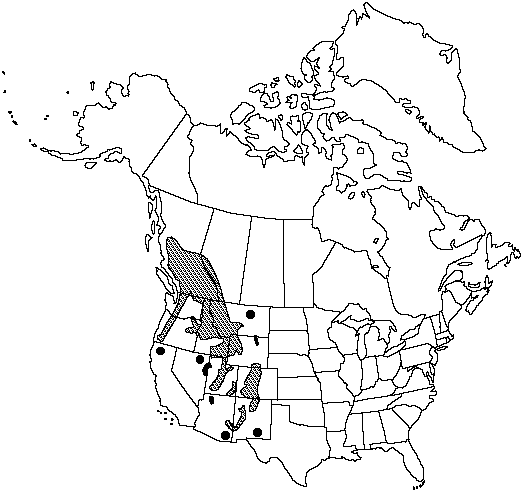Picea engelmannii var. engelmannii
Trees to 60m; trunk to 2m diam.; crown narrowly conic. Bark gray to reddish-brown. Branches spreading horizontally to somewhat drooping; twigs not pendent, rather stout, yellowbrown, finely pubescent, occasionally glabrous. Buds orangebrown, 3–6mm, apex rounded. Leaves 1.6–3 (–3.5) cm, 4-angled in cross-section, rigid, blue-green, bearing stomates on all surfaces, apex sharp-pointed. Seed-cones 3–7 (–8) cm; scales diamond-shaped to elliptic, widest above middle, 13–20 × 9–16mm, flexuous, margin at apex irregularly toothed to erose, apex extending 3–8mm beyond seed-wing impression. 2n =24.
Habitat: Montane and subalpine forests
Elevation: 1000–3000m
Distribution

Alta., B.C., Ariz., Calif., Colo., Idaho, Mont., Nev., N.Mex., Oreg., Utah, Wash., Wyo., Mexico
Discussion
Only Picea engelmannii var. engelmannii occurs in the flora. In Mexico the species is also represented by P. engelmannii var. mexicana (Martínez) R. J. Taylor & T. F. Patterson.
Although Picea engelmannii varies considerably over its broad distributional range, the variation is continuous, militating against recognition of multiple varieties (R.J. Taylor and T.F. Patterson 1980). In the northern part of its range, it hybridizes freely and completely intergrades with P. glauca, as noted above.
Lower Taxa
"widest" is not a number.